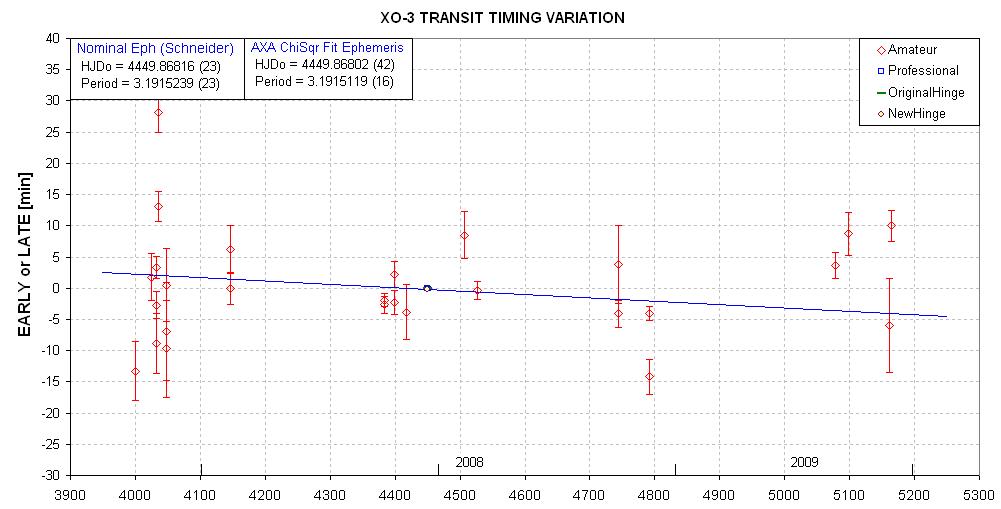
RA = 04:21:53.5, DE = +57:49:01
Season = Dec 01
B = 10.25 ±
0.03, V = 9.80 ± 0.03,
Rc = 9.54 ± 0.03, Ic = 9.28
± 0.05, B-V = 0.45
± 0.05 (B. Gary, all-sky)
HJDo = 4449.86816 (23) & P = 3.1915239 (23) day (Schneider listing in Extrasolar Planets Encyclopaedia)
HJDo = 4449.86802 (42)
& P = 3.1915119 (16)
day (AXA fit)
Depth = 9.9 ±
1.0 mmag
Length = 2.85
± 0.08 hr
Fp = 0.24 ± 0.05,
F2 = 0.77 ± 0.10
Impact parameter = 0.705 (23)

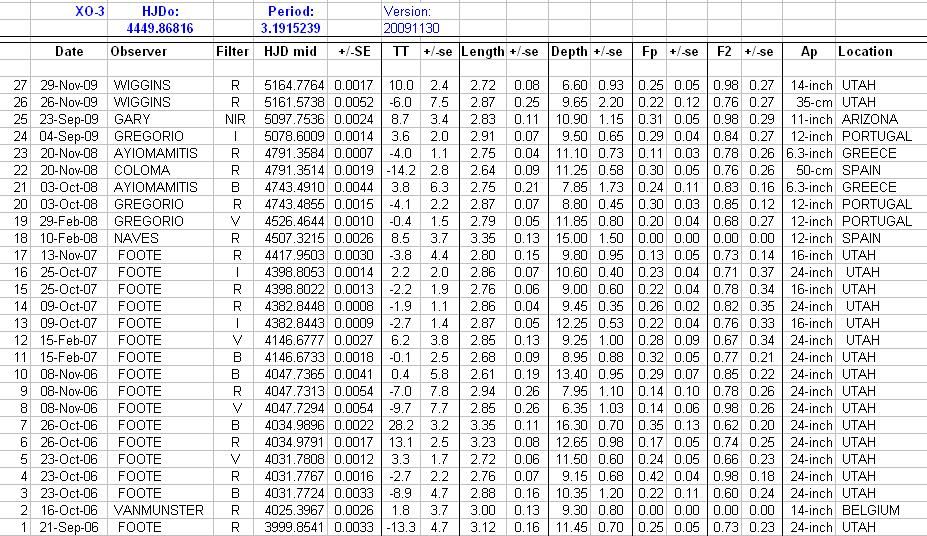
TT = mid-transit departure from ephemeris [min];
Length [hrs]; depth [mmag]; Fp = fraction of transit that's partial;
F2 = ratio of depth at contact #2 to mid-transit depth; Ap = aperture
[inches].
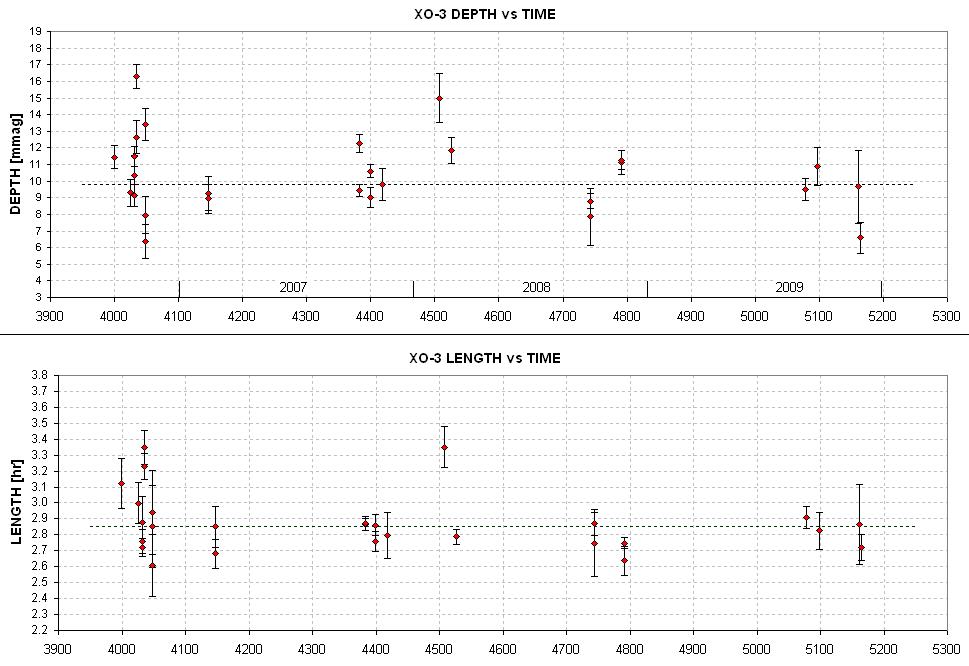
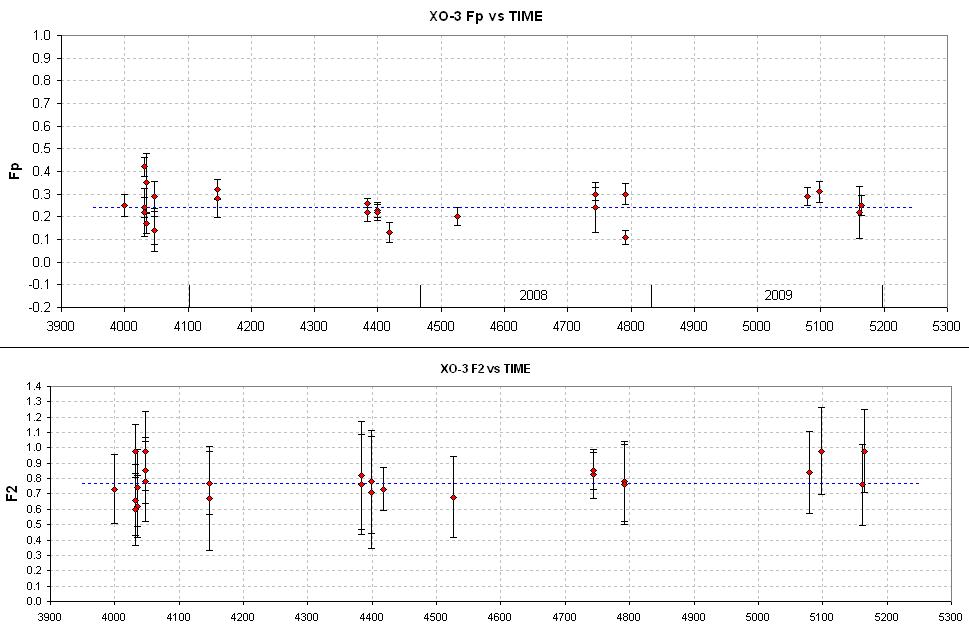
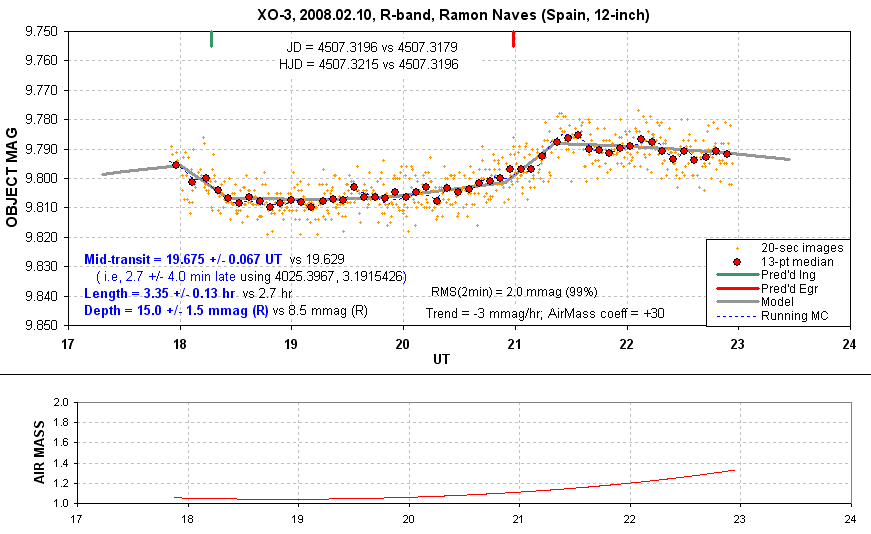
8210nra1

Depth is uncertain due to apparent "air mass curvature"
systematic effect. Coming late is credible though.
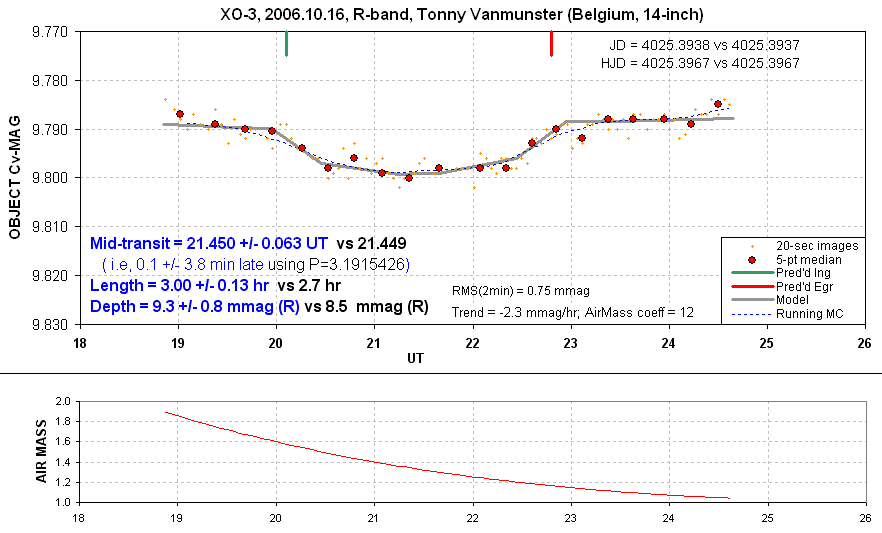
6a16vanR
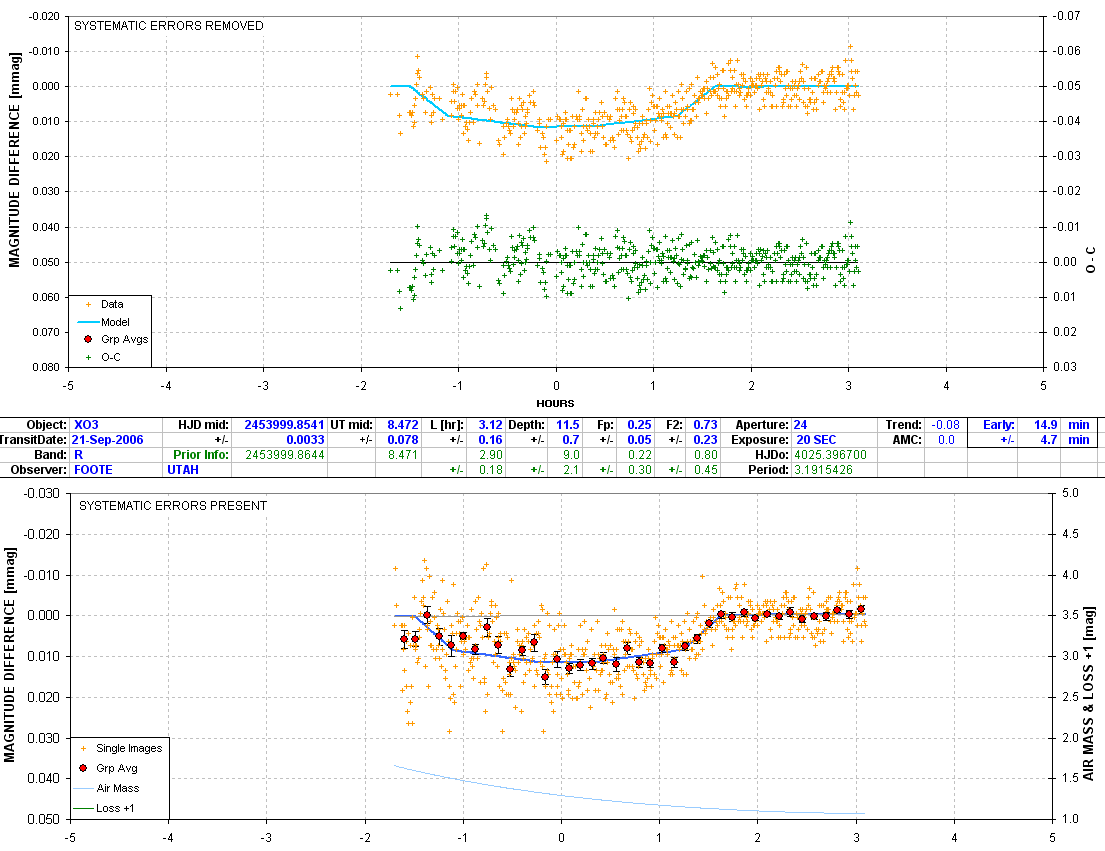
6921futR Either the first, or
one of the first, amateur LCs for this object.
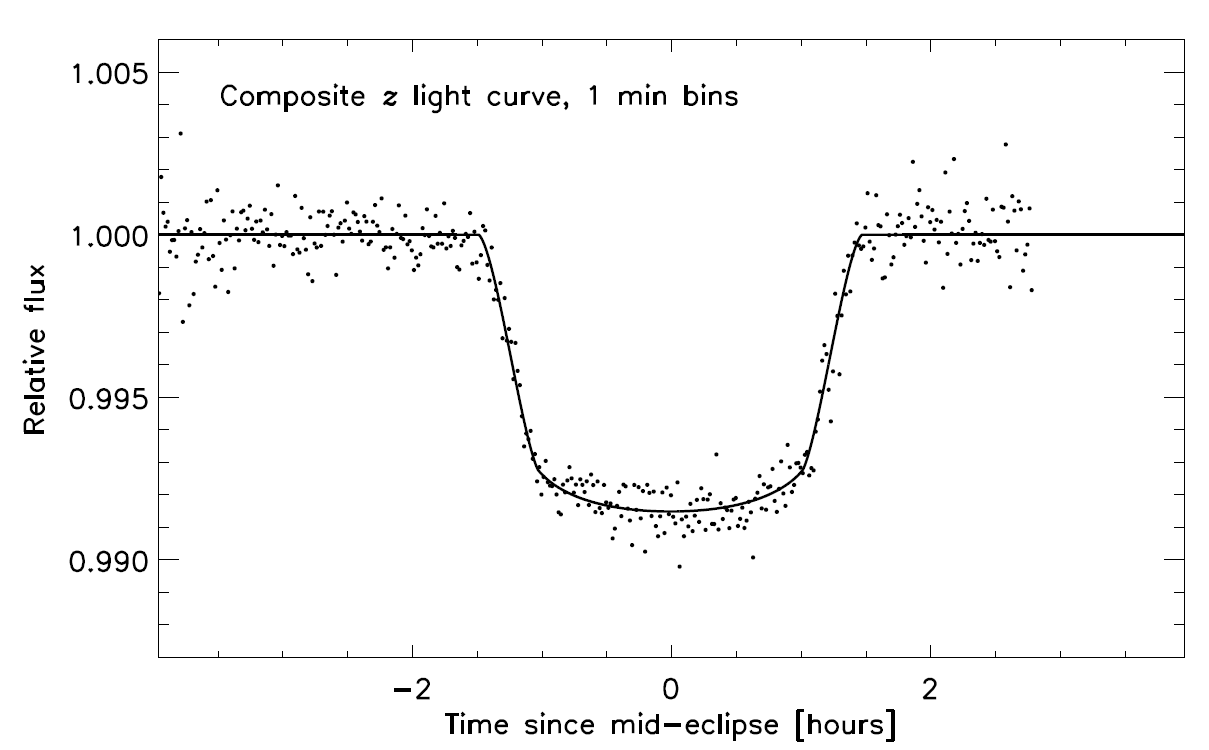
Copied from discovery paper, Johns-Krull,
et al (2007) http://arxiv.org/abs/0712.4283
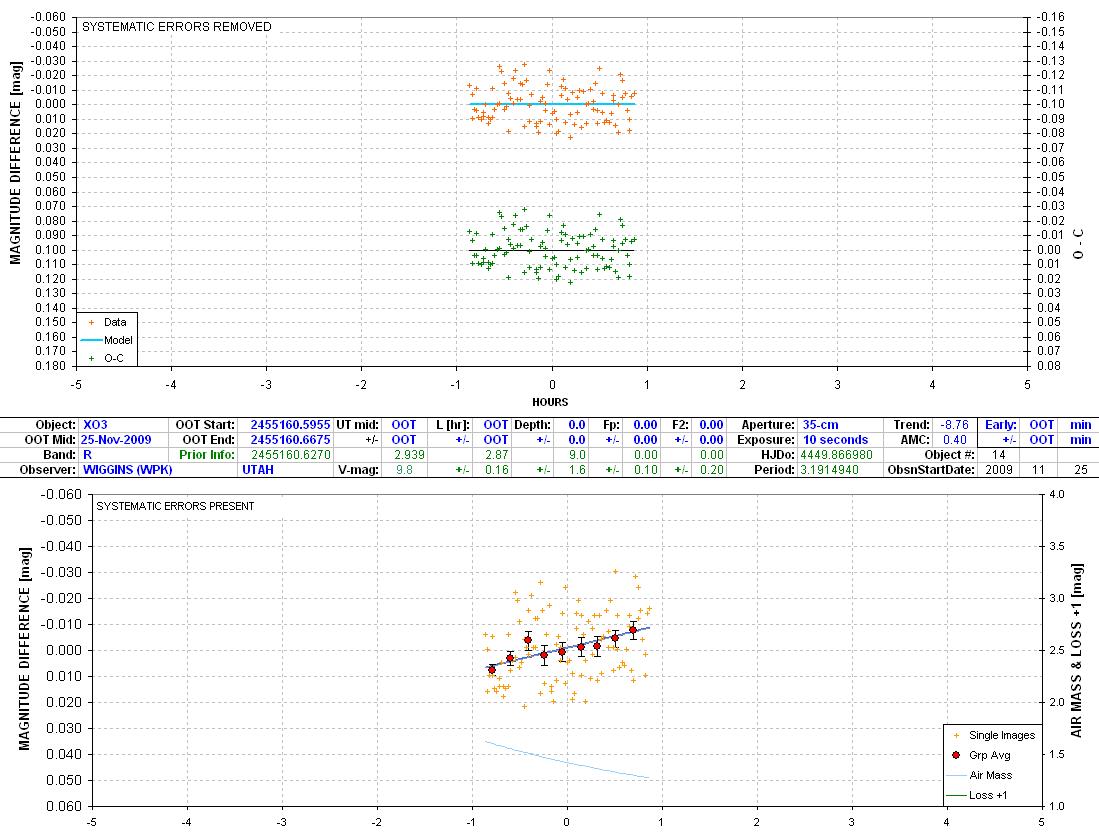
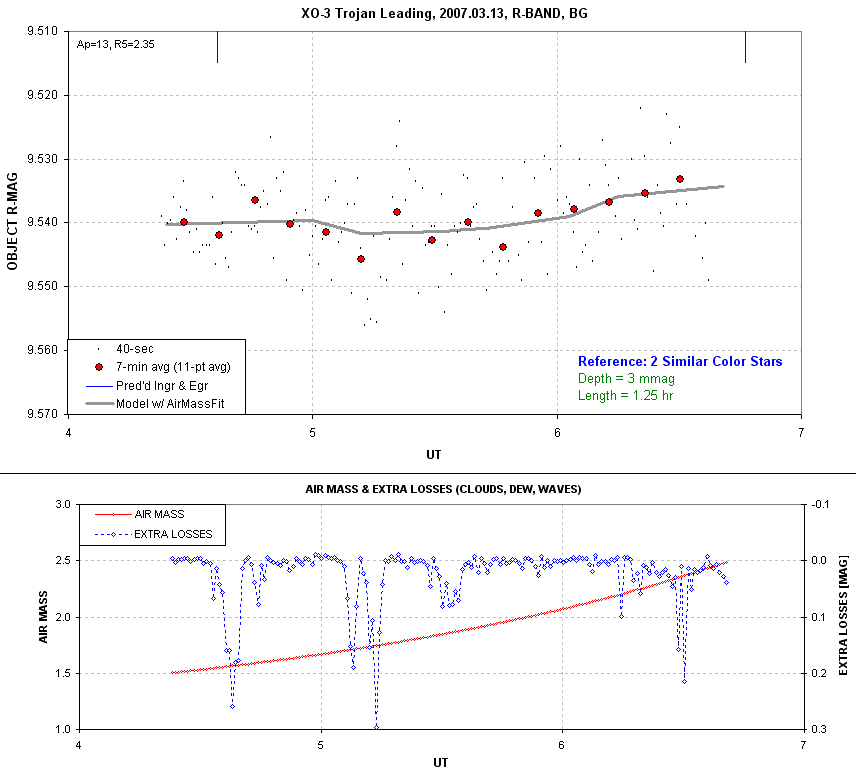
Not statistically significant.
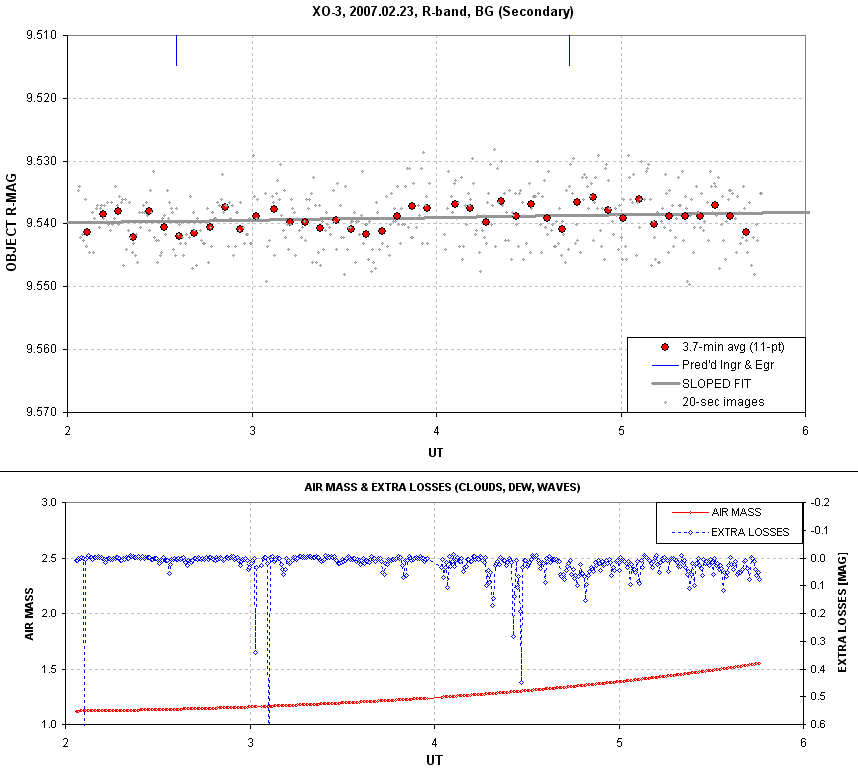
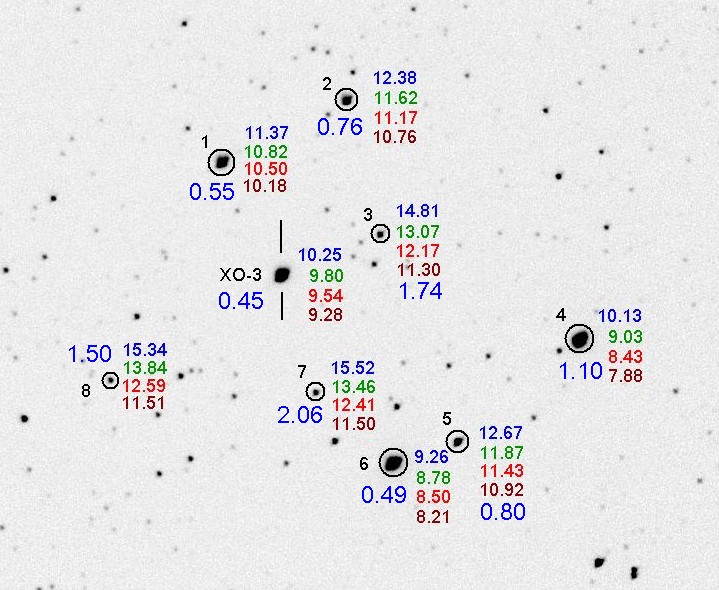
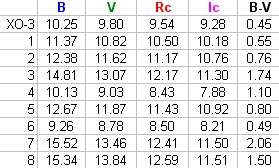
Estimated SE values are 0.03, 0.03, 0.03 and 0.05 mag. The
B-V SE is 0.05 mag.
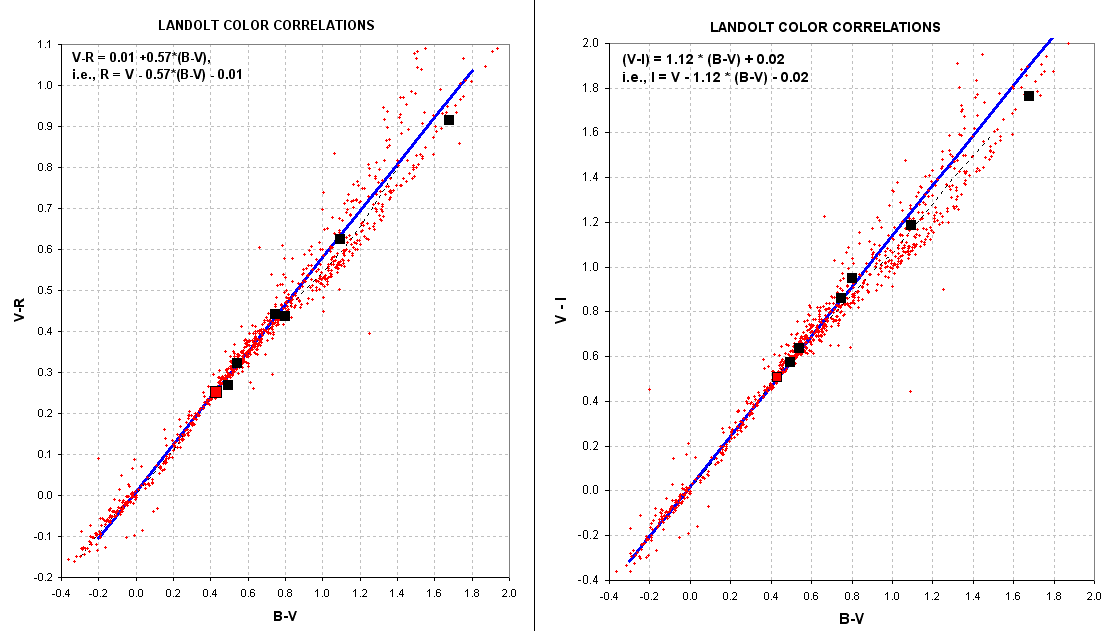
This is an "internal consistency check." It passes!
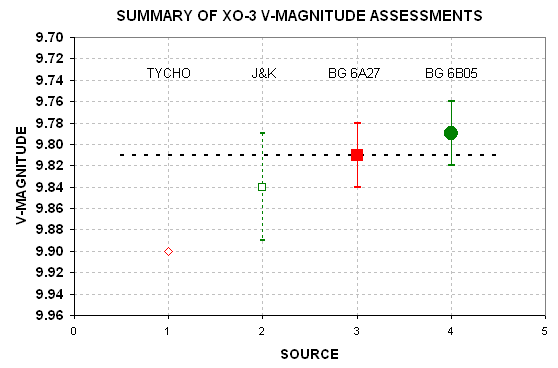
I conclude that interstellar reddening biases the Tycho V-mag
value, and might also influence the conversion from J and K
to V. The two all-sky measurements provide a consistent result
that is free of the interestellar reddening biases. which argues
for V-mag = 9.80 ± 0.03.
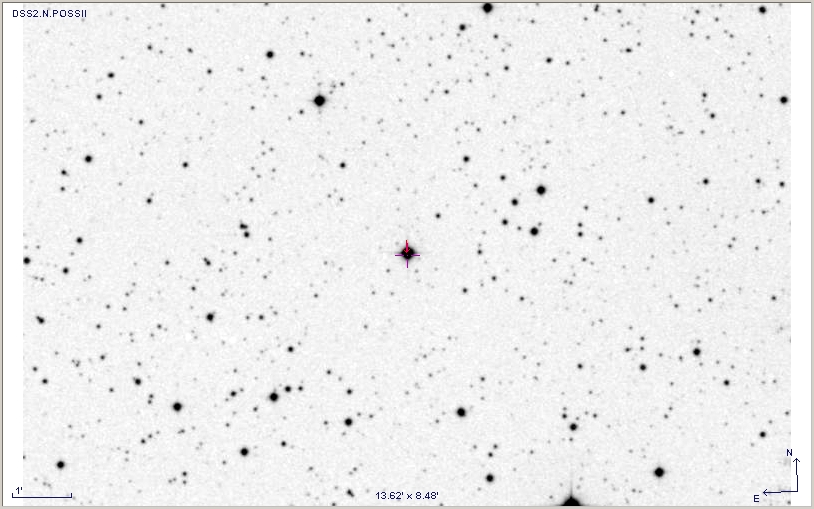
WebMaster: Bruce
L. Gary. Nothing on this web page is copyrighted. This site opened:
September 17, 2007. Last Update: 2009.11.30